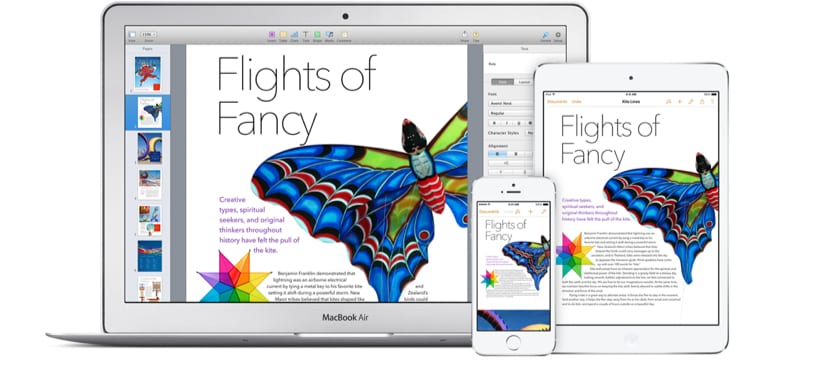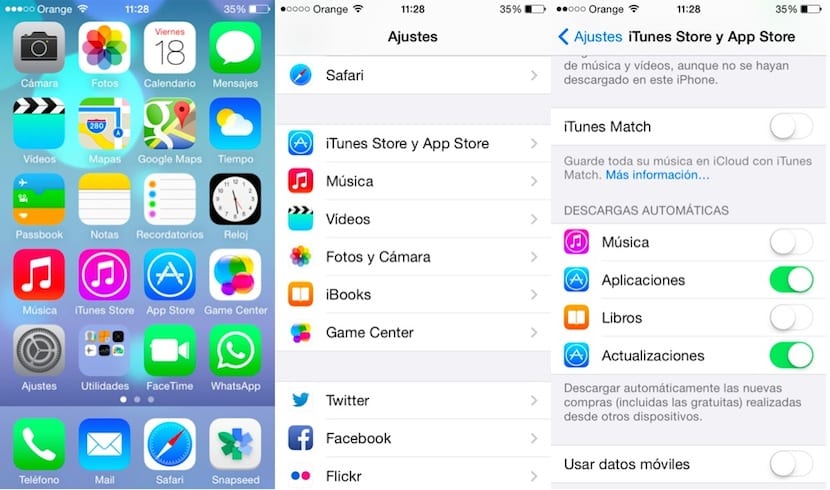
Today we have to talk a little about the benefits that iTunes has in line with iCloud and iOS devices, that is, with the iPhone, iPad and iPod touch. The point is that effectively setting up the iTunes and the iDevice, we can remotely install applications in addition to being able to send information to them.
One thing is power remotely install applications on these devices and quite another is to be able to share information over a Wi-Fi network, being possible that part of that information are applications to install.
With what we have exposed we want to tell you that there are two ways, currently to be able to install applications remotely. One of them by using only Wi-Fi and, of course, that the device where the applications are to be installed is on the same Wi-Fi network, and another helping us in addition to iCloud, in this case not needing the device is under the influence of the same Wi-Fi.
Install apps remotely from iTunes
For quite some time, the Cupertino people included in iTunes the possibility that Apple mobile devices could be synchronized with iTunes wirelessly. However, many users are not aware of this feature and despite taking a long time, for example, with their iPad, they have not activated this option in iTunes. To be able to synchronize contents and with it applications remotely with iTunes, we must follow the following steps:
- The first thing we are going to do is to open iTunes and verify that it is fully updated. For this we can go to the Mac App Store, enter the upper tab of Updates and verify it.
- Once the above is verified, we open iTunes and we connect the iPad with the USB-Lighting sync cable. The mirrored device automatically appears in iTunes.
- Now we are going to activate the option to synchronize via Wi-Fi, for which we click on the device and when the information window appears, in the Summary tab, We go down and select Synchronize with this iPad via Wi-Fi.

- To finish the process click on synchronize and then disconnect the USB-Lighting cable. You will see that even if you disconnect the cable, the iPad is still connected to iTunes, this time, through the Wi-Fi network.
Now, when you download a certain application from the App Store in iTunes, when you select it and click on sync, if the iPad is in Wi-Fi, the application will be installed remotely.
Install apps using iTunes and iCloud
This second option is a little more recent than the first and is that Apple, As of version seven of iOS, it has included the possibility of automatic Downloads of both Music, Applications, Books and Updates, all through iCloud. In this way, when we go to iTunes on a Mac and we have the iCloud cloud activated, if we download a certain application to the iTunes library, it will automatically be installed on all mobile devices that have the option and iCloud activated.
In order to activate this option within iOS devices we must follow the following steps:
- We go into Settings> iTunes Store and App Store. In the AUTOMATIC DOWNLOADS section, we left selected at least the Applications item.

- In iTunes, we must have the team authorized with our Apple credentials and download the desired application from the App Store.
As you have seen, these are two very different ways to install applications within an Apple mobile device. One of them requires the device to be physically under the same Wi-Fi. However, in the second option, if the computer is at home and you are in the workplace, if from home someone who is using the computer downloads an application, You will see how your device that is not on the same Wi-Fi will automatically download.